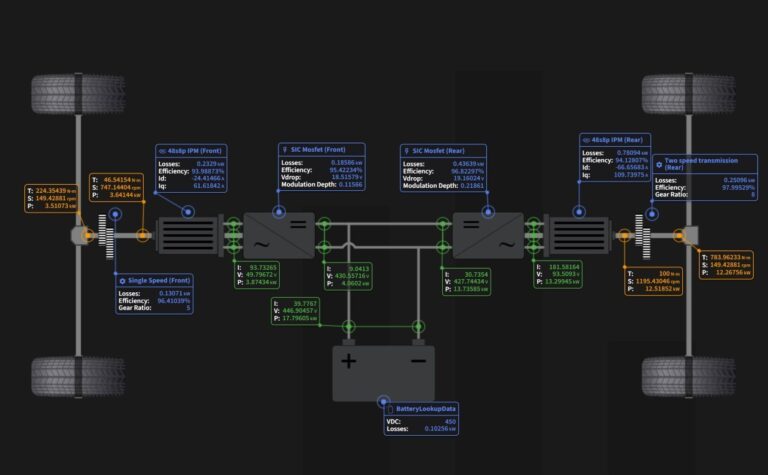Ansys has announced the launch of its ConceptEV, a new cloud-native, Software as a Service (SaaS) solution designed to optimize the development of electric vehicle (EV) powertrains. This tool aims to improve driving range and battery charge times by advancing powertrain components including the battery, inverter, motor and transmission.
EV powertrains consist of multiple complex components that must work together efficiently. Traditional approaches often design these components separately, which can lead to suboptimal performance. ConceptEV aims to address this issue by enabling a system-level design approach.
The system has been developed for the integrated design of EV powertrain architectures and components, ensuring that they are optimized as part of a cohesive system rather than in isolation. It also supports collaboration between system and component design engineering teams by providing a shared system model connected to specific requirements.
The model-based approach will facilitate early design decisions, which Ansys says can lead to improved EV performance, reduced development costs and a faster time-to-market.
ConceptEV’s ability to link component designs to system-level requirements will ensure easy implementation and traceability of specification and design changes. Users can evaluate and quantify system trade-offs, leading to an optimal powertrain design. This approach is designed to reduce errors, save time and support smarter decision making early in the development process, according to Ansys.
“Ansys ConceptEV promises to be a critical advancement for the electric powertrain industry,” said John Reeve, technical director, FluxSys – a UK engineering consultant. “Focusing on optimizing the complete powertrain rather than individual subsystems will increase our productivity and accelerate innovation. ConceptEV is approachable, collaborative and scalable and will help us meet the growing demand for performant EV powertrain systems.”
The introduction of ConceptEV is expected to complement existing simulation workflows, enhancing the ability of engineering teams to collaborate effectively on EV powertrain designs.
Shane Emswiler, senior vice president of products at Ansys, explained: “The solution brings together cross-functional teams in an open environment that encourages collaboration and knowledge sharing to foster innovation. The powertrain is the heart of a vehicle’s performance, so having the right tools to optimize its design to make it lighter, more durable and more cost-effective is critical.”


